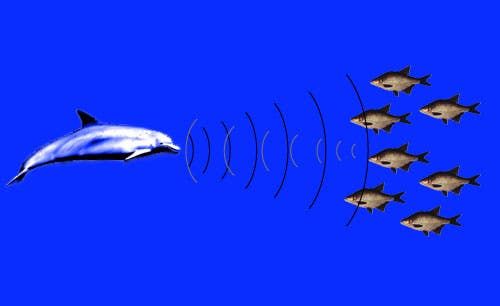Miners trapped inside a mine following a collapsing tunnel or skiers covered in deadly snow after an avalanche might be found and rescued in the future by search teams using an improved form of radar device inspired by dolphin echolocation. The resulting radar can track things more accuracy and at a greater speed than conventional radar.
Timothy Leighton of the University of Southampton’s engineering faculty grew curious as to how dolphins are able to see through the thick cloud of bubbles they blow to herd their prey into smaller groups for feeding.
“I was thinking to myself that dolphins should not be able to see fish with their sonar in these bubble clouds unless they are doing something very clever that manmade sonar cannot,” said the scientist.
“I sat and thought: ‘If I was a dolphin what kind of pulse would I send out in order to see these fish in bubble clouds?’ and then I decided on a pulse that was a positive and negative pulse.”
The radar system Leighton and colleagues built sends out pulses in pairs, with the second having the reverse polarity of the first. Typically, radar only sends one pulse.
When the two pulses hit wood, most metals, rocks and so on, these get reflected in the same way they came through – a positive and a negative pulse – basically canceling each other out after the first collision. When the pair hits a semiconducting material however then it takes that pulse of a negative polarity and turns it into a positive polarity. With both pulses positive, the pair comes back much stronger since they add up making for a very strong signal.
To test their device, the researchers built a semiconductor tracker that weighed less than 2.0 grammes, cost under a euro and was easily picked up by the new device. Also, the radar system was able to pick up roadside bombs, bugging devices or mobile phones even in areas with a lot of metal “clutter”. With this in mind, and considering the price and size of a tracker, it makes sense to add one to the helmet of a miner or search and rescue worker or even a skier’s boots.
“If you have rescue workers going into a building that might collapse or mineworkers going underground, you can give them these and it will tell you exactly where they are and who they are because you can tune them to identify the person,” said Leighton.
Even if the person itself isn’t tagged with a special device, people in distress can still be found and identified using the reverse pair radar since most people carry a cellphone of some kind. The cellphone can be tracked even if it’s broken or that battery is dead, since the radar only needs semiconducting metals; found in abudance in a cellphone.
[RELATED] Are dolphins that smart? Scientist plays down dolphin ‘genius’ myth
Funny enough, Leighton and colleagues later discovered that this is not actually how dolphin sonar works. While dolphins indeed send two consecutive bleeps at the same time, the signal varies in amplitude not polarity.
The findings were reported in the journal Proceedings of the Royal Society.



